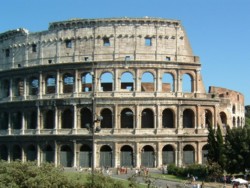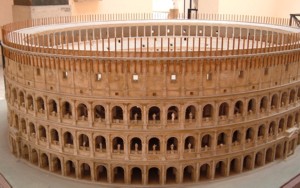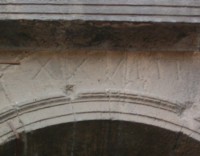The Colosseum is without a doubt the most famous of Rome’s many sights.
You’ll probably never forget your first glimpse of the Colosseum (Colosseo), one of the world’s most famous buildings. As you get to know Rome, the huge arena may slide down your list of Rome priorities, but its initial impact is overwhelming.

The building, also known as the Flavian Amphitheatre, received its more common name from a giant statue, or colossus, of Nero, which stood close to the spot. Designed to replace the excesses of Nero’s unpopular Domus Aurea (or Golden House), the Colosseum was begun by Vespasian and inaugurated after his death in 79AD by his son Titus.Up to 50,000 spectators enjoyed immense gladiatorial shows of death and violence. They entered through numbered arches – the Roman numerals above the entrances are still visible in places. Later the Colosseum was denuded by popes who wanted to use its marble elsewhere; it was also damaged by an earthquake.

Over the road from the Colosseum, next to Via San Giovanni in Laterano, you’ll see a partially excavated area. This was the site of the gladiators’ barracks. A small arena suggests that here they were given the opportunity to practice their crowd-pleasing moves.
The Colosseum is located at the foot of Mussolini’s Via dei Fori Imperiali; from Piazza Venezia head past the Roman Forum. Colosseo Metro station (Linea B) is right opposite. The Palatine Hill and the Roman Forum are next to the Colosseum, as is the Arch of Constantine, cobbled together from earlier monuments. The Circus Maximus is a short walk away; the Baths of Caracalla are a little further.

If you’re on a tight budget or timescale, just walk around the outside. You’ll miss any special exhibitions that might be on, but there are a few places where you can peer inside; in any case the interior contains no great surprises and probably nothing you won’t have seen on television. Free tours run around the exterior; the guides regale you with gory, occasionally dubious, details and generally ask for a tip. Those without licences sometimes get picked up by police, which could make your visit more interesting.
On this site